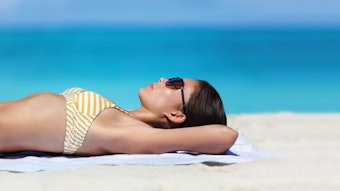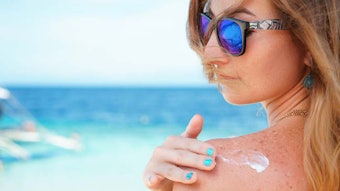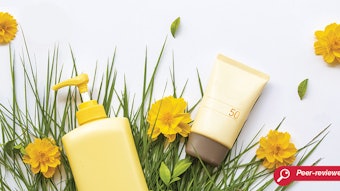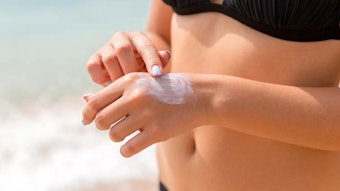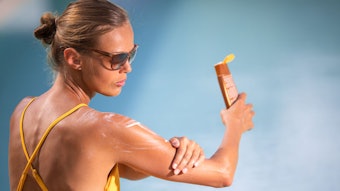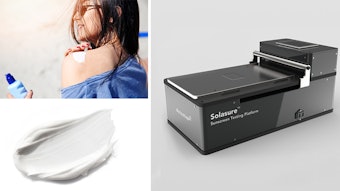Editor’s note: This article is the last in a four-part series considering the effects of test variables on SPF results. Here, the authors assess the effects of pressure during sunscreen sample spreading on UV transmission. The first was published in July 2013 and considered substrate surface temperature; the second, in September 2013, assessed substrate choice; and the third, in October 2013, presented an automated approach to controlling test variables.
SPF determination assesses the protection level afforded by sunscreen products mostly against UVB, in the solar spectrum range of 290–320 nm. But it is now well-known that UVA radiation in the 320–400 nm range also causes a number of detrimental effects in human skin. These facts underline the need to accurately measure and communicate to consumers the level of protection, and what type, a sunscreen provides them. In both cases, they can be evaluated by in vivo methods, which compare the UV radiation dose required for the appearance of a biological endpoint—erythema for SPF, and pigmentation for UVA protection factor (UVA-PF)—with and without protection. However, for ethical, economical and practical reasons, in vivo methods are being replaced by in vitro methods. Whereas worldwide in vitro SPF methods are not yet defined, in vitro UVA-PF methods have been established by Cosmetics Europe, formerly COLIPA, and the International Organization for Standardization (ISO).1, 2 However, these methods require previous determination of the in vivo SPF, and in cases where the in vivo SPF is different from the in vitro SPF, as calculated from the absorption curve, the in vitro calculation must be adjusted using a C coefficient to make these values match.
Currently, the accepted SPF test method is based on an in vitro assessment of UV transmittance through a thin film of sunscreen sample spread onto a roughened substrate—with or without exposure to a controlled dose of UV radiation from a defined UV source. The importance of better correlating the results from such in vitro tests with in vivo results has recently been emphasized; but before this can occur, reproducibility within in vitro results is crucial and a prior condition for producing reliable data. By fixing all other identified parameters such as quantity, spreading or substrate properties, the authors focused their work on a parameter that has previously not been considered effectively—the pressure applied while spreading the sunscreen on the test substrate.
This paper presents studies of the influence of pressure during sample application on the in vitro SPF results obtained for 34 sunscreen products. The products were applied using four different pressures, as monitored by a sensor. All other conditions were kept strictly identical, such as the same operator, quantity of product, temperature of substrate surface,3 substrate properties including roughness and surface energy, spreading method including movement and drying time, and the transmittance analyzer used. This work is part of a larger program aimed at reproducibility optimization by identifying, demonstrating and controlling the parameters that influence in vitro UV values on a large selection of products.


